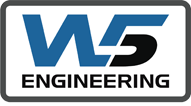In the world of electrical measurements, instrument transformers are indispensable equipment that forms the foundation for many critical devices that fall under the category generally known as instruments such as voltmeters, ammeters, watt-meters, protection relays, etc. Their primary purpose is to change currents and voltages from one magnitude to another and to isolate the measuring circuit from the primary circuit for safety.
Instrument transformers can divide into two basic categories: current transformers (CT) and voltage transformers (VT). Current transformers are most commonly window type (or bushing type), where the primary of the transformer is an incoming or outgoing conductor(s) which is pulled through it. Bar-type and wound CTs are also available, which are connected in line (series) with bus bars or cable terminations bolted on both sides. Voltage transformers also come in variations such as electromagnetic, capacitor, and optical type and are parallel-connected to the circuit to be measured.
Std IEEE C57.13 and IEC 60044 have established standardized requirements for classifying instrument transformers according to accuracy and burden as well as test procedures applicable to current and voltage transformers. Certainly, instrument transformers must have high accuracy in order to ensure proper operation of the devices connected to them.
Instrument transformers for metering purposes must have high accuracy to ensure precise billing while those used for protection purposes must function accurately to ensure the proper operation of protective equipment in the event of a fault, to guarantee maximum safety of supply. Therefore, it is essential to inspect and test them at regular intervals.





